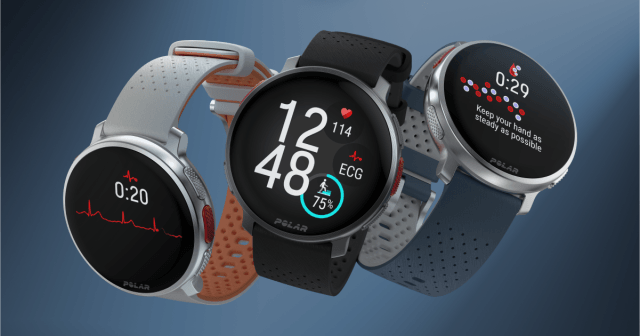Show of hands: how many of us have at some point held a training diary?
The need to track and monitor workouts is often prompted by an event that we’re systematically training for – our very first marathon, a long cross-country skiing event, or a multi-day hiking trip in high altitudes.
Suddenly, we feel like we need more than just our general, loosely planned and executed weekly rhythm of roughly two cardio workouts, two strength training sessions, and one stretching class.
Suddenly, we feel like we need more than just our general, loosely planned and executed weekly rhythm of roughly two cardio workouts, two strength training sessions, and one stretching class.
We realize that in order to be ready for the ambitious goal that lies weeks, or sometimes months, ahead, we need a game plan (such as the Polar Running Program).
To improve our performance, we need to progressively increase the volume and intensity of our training, and also monitor our progress to make sure we’re gradually getting fitter and more ready for The Big Day.
The tricky part about training diaries isn’t just the “paperwork” and the slightly complicated tracking system, which leads the mathematically inclined visual learners among us to draw convoluted charts and diagrams in an attempt to see where we are in the training process. The really hard part is knowing when to deviate from our finely crafted plan.
Even more important than making a great training plan is to know how and when to adjust the training based on where your body really is on any given day.
Even more important than making a great training plan is to know how and when to adjust training based on how ready your body is to train on any given day.
If your training plan says it’s Speedwork Day, but your legs hurt just thinking about exercise, surely the smartest thing isn’t to force yourself on the track?
Or what about the time when you’ve injured a body part which prevents you from training your specific sport, but doesn’t stop you from doing something comparable? How do you know if the duration and intensity of your substitute session was adequate?
If your achilles tendon stops you from going on the two-hour long weekend run which aims at preparing you for the marathon in a month, how can you tell if your exercise bike ride was demanding enough?
Enter Training Load
Wouldn’t it be great if you could compare two completely different training sessions?
Training Load is one of the Polar Smart Coaching features that helps you quantify your training, recognize your personal limits and adjust the intensity and duration of your workouts. Training Load also shows you how the training you do affects your body.
With Training Load you can compare the loads of different workouts, so that if you do end up having to replace your original workout with something else, you’ll know if you got the results you were aiming for.
With Training Load you can compare the loads of different workouts, so that if you do end up having to replace your original workout with something else, you’ll know if you got the results you were aiming for.
For example, Training Load makes the effort of a short, high-intensity session comparable to that of a long, low-intensity one. So, on the days when you just don’t have the hours to spare, you can see how your shorter training session compares to your planned longer one. Polar Flow gives you textual feedback on the load of each session and shows you the load on a scale of 1 to 5.
To help you further compare two different sessions, Polar Flow converts your training load into an approximate recovery time estimation.
Monitor your progress
Another key benefit of the Training Load feature is that it displays your development. As the weeks go by and you tick off runs from your Running Program, you notice your fitness improve.
Suddenly, the exact same workout, like your regular 10k jog on the trail, feels easier than it did at the beginning. Training Load notices this, too, and because the workout now creates less training load compared to what it did earlier, Polar Flow tells you that you’ll recover faster and are ready to go again sooner.
How training load works
Training Load is calculated based on your heart rate and the consumption of critical energy sources (carbohydrates and proteins) during exercise. It gives you feedback on the strenuousness of a single training session.
Training Load also adds in a sport-specific factor to improve the calculation accuracy.
Since our heart rates aren’t fully indicative of the muscle fatigue our bodies experience, though, Training Load also adds in a sport-specific factor to improve the calculation accuracy.
If you’re training without heart rate (read: you forgot your HR sensor), your training load is estimated from your arm movements. Finally, the calculations are affected by the user’s personal information, such as age, sex, weight, VO2max, and training history.
The bottom line
Training Load is great tool for determining the intensity of a training session and making different sessions comparable.
It’s particularly useful in endurance training, so if you’re into endurance sports, Training Load will help you follow the intensity of your training and estimate the time you need for recovery.
If you want to take monitoring training load to a whole new level, read more about the Training Load Pro™ feature on Polar Vantage V and Polar Vantage M.
If you liked this post, don’t forget to share so that others can find it, too.
Or give it a thumbs up!
I like this article
Please note that the information provided in the Polar Blog articles cannot replace individual advice from health professionals. Please consult your physician before starting a new fitness program.





